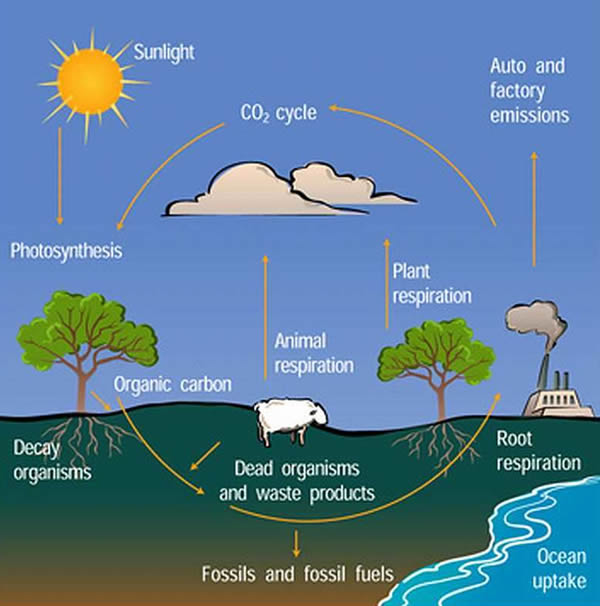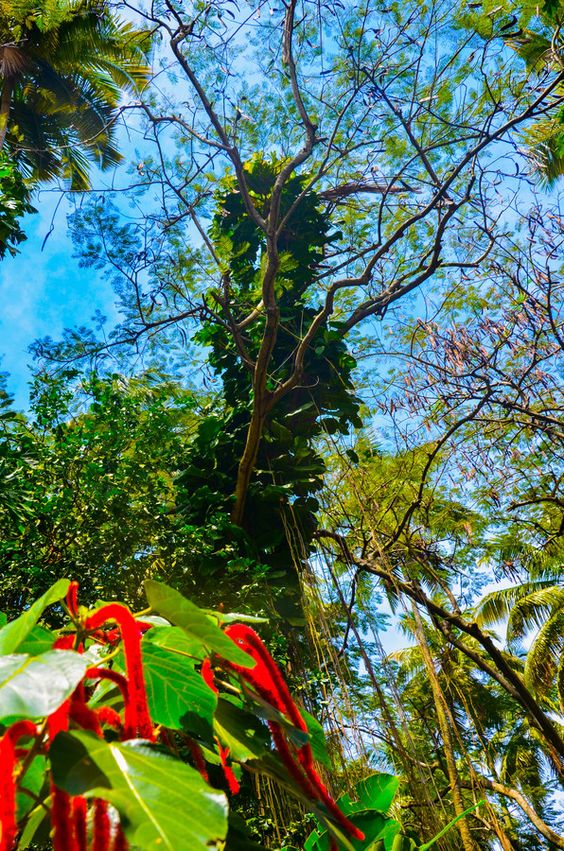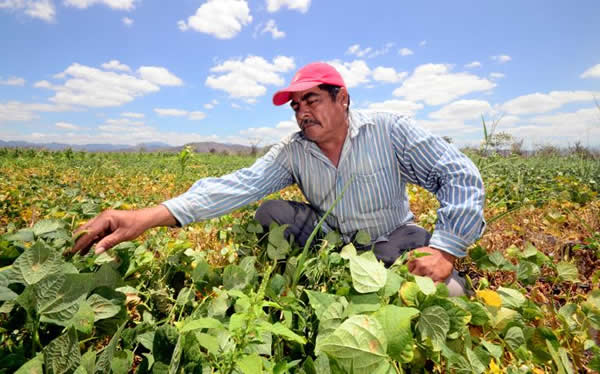Botany
Botany is a very old branch of science that began with early people’s interest in the plants around them. Plant science now extends from that interest to cutting-edge biotechnology. Any topic dealing with plants, from the level of their cellular biology to the level of their economic production, is considered part of the field of botany.
History and Subdisciplines
The origins of this branch of biology are rooted in human beings’ attempts to improve their lot by raising better food crops around 5000 b.c.e. This practical effort developed into intellectual curiosity about plants in general, and the science of botany was born.
Some of the earliest botanical records are included with the writings of Greek philosophers, who were often physicians and who used plant materials as curative agents. In the second century b.c.e. Aristotle had a botanical garden and an associated library.
Bromeliaceae
 |
| Bromeliaceae |
The family Bromeliaceae comprises a group of perennial, monocotyledon herbs or trees that often age slowly.
Important ornamentals (called bromeliads) as well as sources of food and medicines, Bromeliaceae have substantial economic value and are widely cultivated. The colors of the leaves offer decorative foliage, and the flowers are of astonishing hues due to the rich content of pigment-forming substances known as anthocyanins.
Based on ovary position, habit, and floral and pollen morphology, the family Bromeliaceae has been split into three subfamilies: subfamily Pitcairnioideae, subfamily Tillandsioideae, and subfamily Bromelioideae.
Brown Algae
 |
| Brown Algae |
Seaweeds that are brown to olive-green in color belong to the phylum Phaeophyta, or brown algae, which includes between fifteen hundred and two thousand species.
Brown algae (phylum Phaeophyta) are familiar to most people as brown or dark green seaweeds. Some brown algae are microscopic in size, but many are relatively large: One giant kelp measured 710 feet in length. All brown algae are multicellular.
Appearance and Distribution
Brown algae have a body, called a thallus, which is a fairly simple, undifferentiated structure. Some thalli consist of simple branched filaments. Some brown algae have more complex structures called pseudoparenchyma because they superficially resemble the more complex tissues of higher plants.
Bryophytes
 |
| Bryophytes |
Bryophytes comprise three phyla of nonvascular plants, which generally lack the specialized conductive tissues (xylem and phloem) that are found in the vascular plants, are small in size, and are distributed worldwide in moist, shady habitats.
Bryophytes (from the Greek word bryon, meaning “moss”) were once grouped together into one large phylum. Many botanists today recognize that these organisms belong to at least three distinct phyla: phylum Hepatophyta (the liverworts), phylum Anthocerophyta (the hornworts), and phylum Bryophyta (the mosses).
Origin and Relationships
Bryophytes are thought to have originated more than 430 million years ago, during the Silurian period. Many botanists speculate that bryophytes arose from an ancestor in the green algal order Charales or Coleochaetales based on biochemical, morphological, and life history comparisons.
Bulbs and Rhizomes
Bulbs and rhizomes are modified stems, stem bases, or other underground organs used by plants for food (or energy) storage and in asexual reproduction.
Plants reproduce both sexually and asexually. Although sexual reproduction is part of the typical life cycle of plants, for a variety of reasons a plant may reproduce asexually. Exact duplicates of a plant, called clones, are formed by asexual reproduction.
Asexual Reproduction
Asexual reproduction involves the production of offspring through the formation of propagules by mitosis (the process of nuclear cell division). Because genetic recombination does not occur in mitosis, the offspring are genetically identical to the parent plant.
Asexual reproduction does not occur in all plants; some reproduce asexually only when humans intervene. Asexual reproduction occurs when a single plant produces a vegetative propagule that develops into a separate free-living plant. Many of the propagules that support asexual reproduction are actually highly modified branches. Others are modified roots.
Plants reproduce both sexually and asexually. Although sexual reproduction is part of the typical life cycle of plants, for a variety of reasons a plant may reproduce asexually. Exact duplicates of a plant, called clones, are formed by asexual reproduction.
Asexual Reproduction
Asexual reproduction involves the production of offspring through the formation of propagules by mitosis (the process of nuclear cell division). Because genetic recombination does not occur in mitosis, the offspring are genetically identical to the parent plant.
Asexual reproduction does not occur in all plants; some reproduce asexually only when humans intervene. Asexual reproduction occurs when a single plant produces a vegetative propagule that develops into a separate free-living plant. Many of the propagules that support asexual reproduction are actually highly modified branches. Others are modified roots.
C4 and CAM Photosynthesis
Alternative forms of photosynthesis are used by specific types of plants, called C4 and CAM plants, to alleviate problems of photorespiration and excess water loss.
Photosynthesis is the physiological process whereby plants use the sun’s radiant energy to produce organic molecules. The backbone of all such organic compounds is a skeleton composed of carbon atoms. Plants use carbon dioxide from the atmosphere as their carbon source.
The overwhelming majority of plants use a single chemical reaction to attach carbon dioxide from the atmosphere onto an organic compound, a process referred to as carbon fixation. This process takes place inside specialized structures within the cells of green plants known as chloroplasts.
Cacti and Succulents
 |
| Wild cacti |
Succulents are fleshy plants that store water in natural reservoirs such as stems or leaves. Cacti are a group of flowering plants; all cacti are succulents.
The Cactaceae family includes about 1,650 to 3,500 species of cacti and succulents classified in 130 genera. Because they live in harsh, arid environments, these fleshy, spiny perennial plants have developed a variety of unique characteristics for protection and to retain water, reduce evaporation, and resist heat.
Cacti
The word “succulent” is derived from the Latin term sucus, meaning sap. All cacti are succulents. The word “cactus” is derived from the Greek term kaktos, describing thistles. Botanists estimate cacti first existed during the Mesozoic era, about 130 million years ago. Limited cacti fossil evidence exists (the earliest known specimen is about forty thousand years old).
Calvin cycle
 |
| Calvin cycle |
The Calvin cycle, also known as the Calvin Benson cycle, is an integral part of the process of photosynthesis in plants, algae, and photosynthetic bacteria. Named after its discoverer, Melvin Calvin of the University of California at Berkeley, its principal product is a three-carbon compound called glyceraldehyde 3-phosphate, or PGAL. Sugars are synthesized using PGAL as a starting material.
Light, absorbed by chlorophyll, is used to synthesize the high-energy compounds adenosine triphosphate (ATP) and reduced nicotinamide adenine dinucleotide phosphate (NADPH). Chlorophyll and the enzymes that are used for synthesis of ATP and NADPH are associated with internal membranes in all photosynthetic cells.
The ATP and NADPH, once formed, are released from the membrane-bound enzymes and diffuse into the surrounding solution inside the cell. The Calvin cycle takes place in this solution, using the ATP and NADPH molecules as a source of energy to drive the conversion of carbon dioxide into PGAL.
Carbohydrates
Common organic chemicals found in all living organisms, important in energy metabolism and structural polymers, carbohydrate molecules are made up of carbon, hydrogen, and oxygen.
Carbohydrates are made of carbon, hydrogen, and oxygen molecules in a 1:2:1 ratio, respectively. This is often simplified using the formula nCH2O, where n represents the number of CH2O subunits in a carbohydrate. This formula should make it clear how the name carbohydrate was derived, as nCH2O is essentially carbon and water.
The simplest carbohydrates are the monosaccharides, or simple sugars. Individual monosaccharides can be joined together to make disaccharides (composed of two monosaccharides), oligosaccharides (short polymers composed of two to several monosaccharides), and polysaccharides (longer polymers composed of numerous monosaccharides).
Carbon Cycle
 |
| Carbon Cycle |
The carbon cycle is the movement of the element carbon through the earth’s rock and sediment, the aquatic environment, land environments, and the atmosphere. Large amounts of organic carbon can be found in both living organisms and dead organic material.
An enormous reservoir of carbon, on the order of 20 x 1015 tons, may be found on the surface of the earth. Most of this reservoir is found in rock and sediment. The carbon cycle therefore represents the movement of this element through the biosphere in a process mediated by photosynthetic plants on land and in the sea.
The process involves the fixation of carbon dioxide (CO2) into organic molecules, a process called photosynthesis. Energy used in the process is stored in chemical form, such as that in carbohydrates (sugars such as glucose). The organic material is eventually oxidized, as occurs when a photosynthetic organism dies.
Caribbean Agriculture
 |
| Caribbean Agriculture |
Agriculture in the Caribbean islands, from the Bahamas to Trinidad, is concentrated in sugarcane, bananas, coffee, tobacco, and some citrus and cacao.
The Caribbean Sea is an extension of the western Atlantic Ocean that is bounded by Central and South America to the west and south and the islands of the Antilles chain on the north and east. At the end of the twentieth century, agriculture was basic to the economies of nearly every island.
Two fundamentally different types of agriculture dominate: large-scale commercial, or plantation, agriculture and small-scale semisubsistence, or peasant, farming. Plantation farming provides the most exports, by value, whereas peasant farming involves far more human labor.
Caribbean agriculture operates under various natural and cultural restraints. Most of the islands have rugged terrain, restricting productive agriculture to river valleys and coastal plains. Typically, less than one-third of an island’s land area is suitable for crops.
Caribbean Flora
 |
| Caribbean Flora |
The Caribbean region is noted for its diverse and varied vegetation. Flowers thrive in the moist, tropical environment found on many islands. Hibiscus, bougainvillea, and orchids are just a few of the varieties found there. The heavily touristed region faces challenges in balancing development with preserving its flora.
The Caribbean region comprises the islands from the Bahamas to Trinidad and is noted for its tropical vegetation and flowers. This region has been significantly affected by human activities.
Deforestation began with the development of sugarcane culture in the seventeenth century. When forests are cut for farmland, soil erosion and depletion often occur. Jamaica, Haiti, and many of the smaller islands have suffered acute ecological degradation.
Cell Cycle
 |
| Cell Cycle |
In plants, as in all eukaryotic life-forms, the cell cycle comprises the processes of cell division, constituted by three preparatory phases (G , G , and S), followed by mitosis (nuclear division) and cytokinesis (cytoplasm division).
One of the fundamental characteristics of living organisms is their ability to grow and reproduce. At the cellular level, growth is accomplished by a gain of mass, followed by division into two daughter cells.
In unicellular species, such as bacteria and green algae, this division results in the production of new organisms. In multicellular organisms, such as plants, cells must divide many times to produce new individuals, and additional processes of differentiation into mature cell types must occur.
Cell Theory
The notion that the cell is the smallest division of life and its attendant principles have been developed over the past three centuries and are collectively known as the cell theory.
Before the invention of the microscope, people studying living organisms saw whole and complete organisms and did not imagine that life was subdivided into smaller compartments. It is now known that the cell is the fundamental unit of life and that all living organisms are composed of cells. Because cells are microscopic, their existence was not discovered until the seventeenth century.
Discovery of the Cell
The discovery of the cell did not come about until the last half of the seventeenth century, after the Dutch inventor Antoni van Leeuwenhoek built the first light microscope. When looking at pond water using his light microscope in 1674, Leeuwenhoek saw many tiny creatures which were invisible to the naked eye. Leeuwenhoek assumed that these tiny “animalcules” were alive because he could see them moving.
Cell-to-cell Communication
 |
| Cell-to-cell Communication |
Cell-to-cell communication involves the various stimuli to which plants respond, whether biotic, such as hormones and disease, or abiotic, such as water status, heat, cold, and light.
Throughout their lives, plants and plant cells continually respond to both external and internal signals, which they use to alter their physiology, morphology, and development. The manner in which plants respond to a stimulus is determined by developmental age, previous environmental experience, and internal biological clocks that specify the time of year and time of day.
Chemical Messengers
In complex multicellular eukaryotes, the coordination of responses to environmental and developmental stimuli requires an array of signaling mechanisms. Animals have evolved two systems, the nervous system and the endocrine (hormone) system, for responding to stimuli. While plants lack a nervous system, they did evolve hormones and other chemicals, such as phytochrome, as chemical messengers.
Cell Wall
The cell wall is the outer, rigid wall of a cell, dividing the protoplast (the interior, including the cytoplasm and nucleus) from the cell’s external environment. The plant cell wall is both unique to and a major feature of plants, perhaps second only to the plant’s photosynthetic ability.
The primary functions of the cell wall in plant cells include are to provide protection for the enclosed cytoplasm and give mechanical support to the entire plant structure. Plant cell walls are part of the extracellular matrix, a complex mixture of extracellular materials found between cells.
These materials are synthesized by the intracellular contents and transported through the plasma membranes. All plant cell types consist of at least a primary cell wall, and many also produce a secondary cell wall. In addition, certain cells also secrete specialized substances into the extracellular matrix.
Cells and Diffusion
 |
| Cells and Diffusion |
The process of active transport requires the direct input of energy tomove particles across the cell membrane.Diffusion and facilitated diffusion can occur without the direct expenditure of cellular energy.
Diffusion
If one were to drop a sugar cube into glass of water and immediately use a straw to sip a little water from the top of the glass, the water would not have a sweet taste. However, after a few hours, a sip of water from the top would taste sweet.
The reason for the change in the taste of the water is diffusion, the net movement of particles down a concentration gradient (that is, from an area of higher concentration to an area of lower concentration). Concentration is the number of particles or amount of substance per unit volume, and a gradient occurs when some factor such as concentration changes from one volume of space to another.
Cellular Slime Molds
Cellular slime molds, or dictyostelids, were originally considered to be fungi. These microscopic, multicellular organisms are easily mistaken for some of the microfungi that commonly occur as contaminants in laboratory cultures. However, cellular slime molds are more closely related to the protozoans than to fungi.
Although once thought to be fungi, the protists of the phylum Dictyosteliomycota actually have more in common with the paramecium or amoeba that can be observed in a drop of pond water when viewed under the microscope than they do with mushrooms and toadstools.
Cellular slime molds are essentially microscopic throughout their entire life cycle, and only rarely can they be observed directly in nature, as is the case for the plasmodial slime molds. Cellular slime molds must therefore be grown under controlled laboratory conditions in order to be studied.
Central America Agriculture
 |
| Central America Agriculture |
Agriculture is generally understood to be concerned with the production of food; however, in Central America, ornamental plants and flowers, forest products, and fibers are also important agricultural commodities.
The nations of Central America are generally considered to be Belize, Costa Rica, El Salvador, Guatemala, Honduras, Nicaragua, and Panama. At the end of the twentieth century, the agricultural sector employed about 46 percent of the available labor force in Central America, most of which was engaged in subsistence agriculture. This percentage is higher than that of the neighboring developing countries of Mexico (28 percent) and Colombia (30 percent).
The Central American percentage is higher than those in more developed countries, such as the United States and Canada, each of which is below 4 percent. The percentage of suitable land in Central America is about equal to that in Mexico (12 percent) but significantly more than in Colombia (4 percent). Arable land in the United States is about 19 percent.
Central American Flora
 |
| Central American Flora |
Central America — comprising the nations Belize, Costa Rica, El salvador, Guatemala, Honduras, Nicaragua, and Panama — is a land bridge that connects North America and South America, and many of its plants are similar to plants found on both those continents.
Lowlands
Tropical rain forests lie on the eastern half of Central America and typically have many tall, broadleaved evergreen trees 130 feet (40 meters) or more in height, and 4-5 feet (1.2-1.5 meters) in diameter that form a dense canopy. Shade-seeking plants, such as palms, figs, ferns, vines, philodendrons, and orchids, form the forest undergrowth beneath the trees.
Epiphytes, such as orchids, ferns, bromeliads, and mosses, cling to the branches of the trees in a dense mat of vegetation—these plants have no roots but grow by clinging to the trunks of trees and drawing moisture and nourishment from the air.
Subscribe to:
Comments (Atom)






